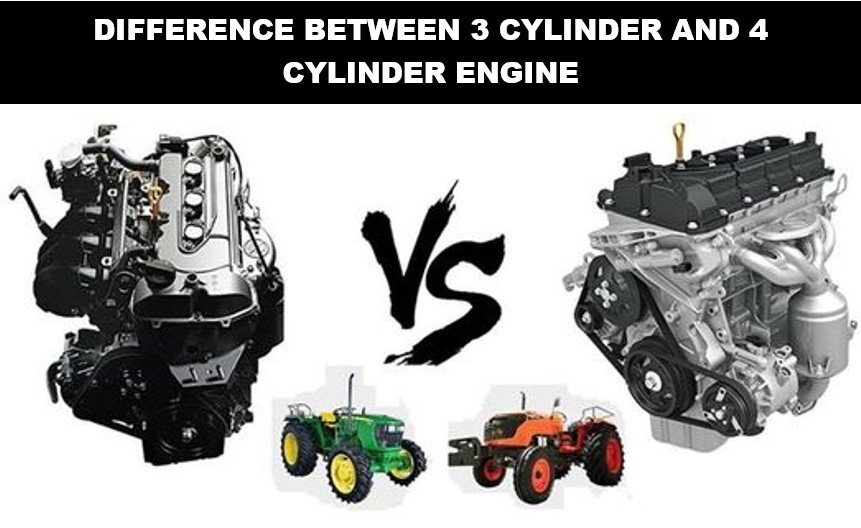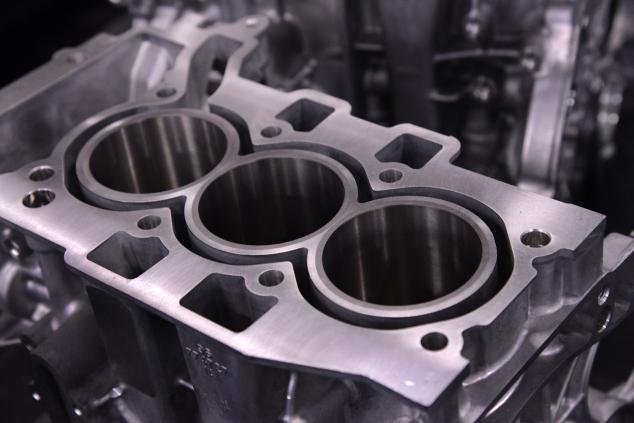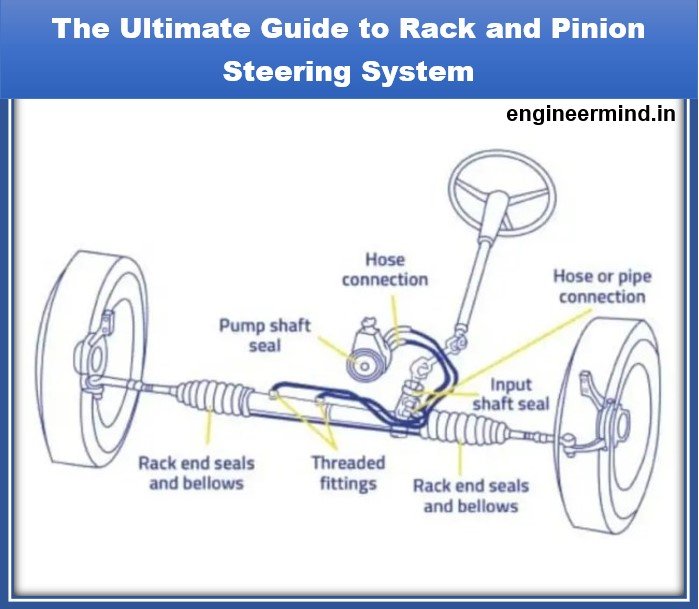Two popular engine types, the 3 cylinder and 4 cylinder engine, have gained significant attention due to their unique characteristics and widespread usage. In this article, we will explore the differences between these two engine types, their advantages and disadvantages, and the applications where they excel.

Table of Contents
What is a 3 Cylinder Engine?

A 3 cylinder engine, as the name suggests, consists of three cylinders arranged in a specific configuration. This engine type is known for its compact size and lightweight design. It is commonly found in small cars, subcompact SUVs, and certain motorcycles. Despite having fewer cylinders compared to its counterparts, the 3 cylinder engine offers several advantages.
Advantages of a 3 Cylinder Engine
- Improved Fuel Efficiency: Due to its smaller size and reduced friction, a 3 cylinder engine is generally more fuel-efficient than larger engine configurations. It consumes less fuel while delivering sufficient power, making it an attractive choice for environmentally conscious drivers.
- Lower Emissions: The smaller displacement and lower number of cylinders in a 3 cylinder engine result in reduced emissions. With stricter emission regulations in place, automakers are turning to these engines to meet environmental standards without compromising on performance.
- Compact and Lightweight: The compact design of a 3 cylinder engine allows for greater flexibility in vehicle packaging. It occupies less space, making it easier to fit into smaller vehicles. Moreover, the reduced weight contributes to improved handling and manoeuvrability.
Disadvantages of a 3 Cylinder Engine
- Vibration and Noise: Three-cylinder engines tend to produce more vibration and noise compared to their counterparts with a higher cylinder count. This can affect the overall refinement and smoothness of the vehicle, especially at higher speeds.
- Limited Power Output: Although modern 3 cylinder engines have made significant advancements in power delivery, they may still lack the sheer power and torque of larger engine configurations. This limitation can impact the performance of vehicles requiring high acceleration or towing capabilities.
What is a 4 Cylinder Engine?

A 4 cylinder engine comprises four cylinders arranged in a specific configuration. It is one of the most common engine types found in a wide range of vehicles, including sedans, hatchbacks, SUVs, and trucks. The 4 cylinder configuration offers its own set of advantages and disadvantages.
Advantages of a 4 Cylinder Engine
- Balanced Performance: A 4 cylinder engine strikes a balance between power and efficiency. It provides sufficient power output for most everyday driving situations while maintaining respectable fuel economy figures.
- Smooth Operation: Compared to a 3 cylinder engine, a 4 cylinder engine generally runs smoother and produces fewer vibrations. This contributes to a more refined driving experience, particularly at higher speeds.
- Wide Range of Applications: The versatility of a 4 cylinder engine allows it to be used in various vehicle types and sizes. It can power anything from compact cars to mid-size SUVs, providing reliable performance across different segments.
Disadvantages of a 4 Cylinder Engine
- Higher Cost: Due to the additional components and complexity involved, 4-cylinder engines are often more expensive to manufacture compared to 3-cylinder engines. This cost can translate to a higher purchase price for vehicles equipped with a 4-cylinder engine.
- Lower Fuel Efficiency: While a 4-cylinder engine is generally more fuel-efficient than larger engine configurations, it may not match the efficiency of a 3-cylinder engine. The increased number of cylinders and higher displacement contribute to slightly higher fuel consumption.
A 4-cylinder engine is an internal combustion device that has four cylinders set up either in a “V” arrangement or in a straight line. Together, the cylinders burn fuel and air to produce pressure that drives the pistons and rotates the crankshaft. This design’s blend of power and fuel efficiency makes it a popular choice for vehicles and light trucks. An engine’s power output and efficiency are influenced by the number of cylinders in it; more cylinders normally produce greater power but also use more fuel.
Comparison Between 3 Cylinder and 4 Cylinder Engines
When comparing 3-cylinder and 4-cylinder engines, several factors come into play. Let’s delve deeper into the key aspects of performance, fuel efficiency, cost, size and weight, smoothness and vibration, and applications.
Performance
In terms of performance, 4-cylinder engines typically offer more power and torque compared to 3-cylinder engines. The additional cylinder allows for greater combustion, resulting in improved acceleration and overall performance. However, advancements in turbocharging and direct injection technology have narrowed the performance gap between these two engine types, making 3-cylinder engines more competitive in recent years.
Fuel Efficiency
When it comes to fuel efficiency, 3-cylinder engines often have the edge. Their smaller size and reduced weight contribute to lower fuel consumption, especially during city driving conditions. However, the fuel efficiency difference between the two engine types may not be substantial, and modern 4-cylinder engines with advanced fuel management systems can achieve impressive mileage figures.
Cost
In terms of cost, 3-cylinder engines generally have an advantage. The reduced number of components and simpler design contributes to lower manufacturing costs. This can translate to lower purchase prices for vehicles equipped with 3-cylinder engines. However, it’s important to consider that other factors such as brand, technology, and additional features also influence the overall cost of a vehicle.
Size and Weight
3 cylinder engines are smaller and lighter compared to 4-cylinder engines. This compactness allows for greater flexibility in vehicle design and packaging. It benefits small cars and subcompact SUVs where space optimization is crucial. On the other hand, 4-cylinder engines are more suitable for larger vehicles, providing the necessary power and torque required for heavier loads.
Smoothness and Vibration
Due to the higher number of cylinders, 4-cylinder engines generally run smoother and produce fewer vibrations compared to 3-cylinder engines. The additional cylinder contributes to better engine balance, resulting in a more refined and enjoyable driving experience, especially during long journeys or at higher speeds.
Applications
Both 3-cylinder and 4-cylinder engines find applications in various vehicle segments. 3 cylinder engines are commonly found in small cars, subcompact SUVs, and certain motorcycles. They offer an ideal balance between fuel efficiency and performance for urban commuting and everyday driving. 4 cylinder engines, on the other hand, are more versatile and power a wide range of vehicles, including sedans, hatchbacks, SUVs, and trucks.
Conclusion
In conclusion, the choice between a 3-cylinder engine and a 4-cylinder engine depends on various factors such as the desired performance, fuel efficiency, cost, and vehicle application. While 3-cylinder engines excel in fuel efficiency and compactness, 4-cylinder engines offer a balanced blend of performance and refinement. Ultimately, it’s essential to consider individual preferences, driving needs, and the specific vehicle in question when making a decision.
FAQs
Is a 3-cylinder engine better than a 4-cylinder engine?
While each engine type has its own advantages, it ultimately depends on the specific requirements and preferences of the driver. A 3-cylinder engine offers better fuel efficiency and compactness, while a 4-cylinder engine provides a balanced mix of power and refinement.
Which type of engine is more fuel-efficient?
Generally, 3-cylinder engines tend to be more fuel-efficient due to their smaller size and reduced weight. However, modern 4-cylinder engines with advanced fuel management systems can also achieve impressive fuel economy figures.
Are 3-cylinder engines more affordable than 4-cylinder engines?
Yes, 3-cylinder engines are typically more affordable than 4-cylinder engines. The simpler design and reduced number of components contribute to lower manufacturing costs, which can translate to lower purchase prices for vehicles equipped with 3-cylinder engines.
Do 4-cylinder engines produce more power than 3-cylinder engines?
Yes, 4-cylinder engines generally produce more power and torque compared to 3-cylinder engines. The additional cylinder allows for greater combustion, resulting in improved performance. However, advancements in technology have narrowed the performance gap between these two engine types.
What are some common applications of 3-cylinder engines?
3 cylinder engines are commonly found in small cars, subcompact SUVs, and certain motorcycles. Their compact size and fuel efficiency make them suitable for urban commuting and everyday driving.
In car engines why don’t we use only one big cylinder instead of multiple cylinders, thereby not using camshaft anymore?
Four cylinders, DOHC. Top RPM, about 12,000. Top power, 72HP at 10,000 RPM. Much, MUCH more fun to ride. When you have only one cylinder, you have a HUGE amount of rotating mass. That limits the top RPM, and the inertial load means you just can’t spin it up very fast, so it takes approximately forever to actually GET to the top RPM. For more details click here.






